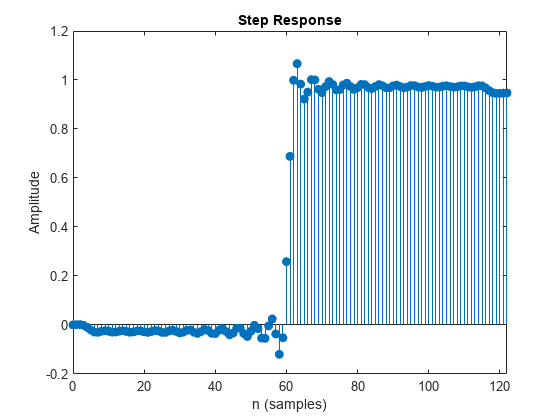stepz
Step response of discrete-time filter System object
Syntax
Description
[___]
= stepz(___,Arithmetic= analyzes the
filter System object based on the arithmetic specified in arithType)arithType using any
one of the previous syntaxes.
